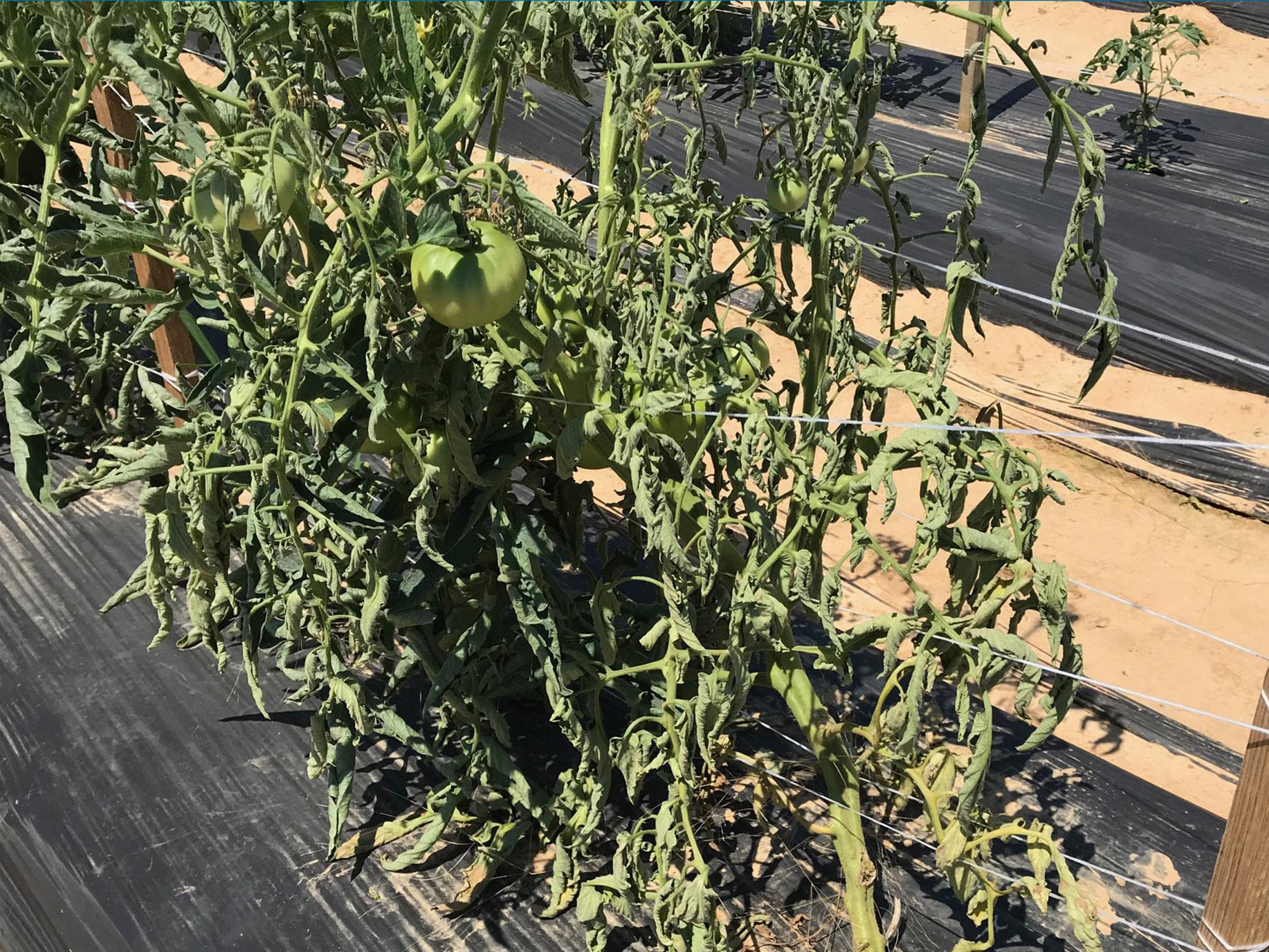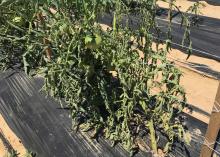Information Possibly Outdated
The information presented on this page was originally released on July 6, 2018. It may not be outdated, but please search our site for more current information. If you plan to quote or reference this information in a publication, please check with the Extension specialist or author before proceeding.
Southern blight hitting state’s tomatoes hard
CRYSTAL SPRINGS, Miss. -- Conditions have been ideal this summer for a disease outbreak that makes tomatoes wilt and look like they are just too dry.
Southern blight is a fungal disease of tomatoes commonly characterized by white, thread-like growth and brown or tan, round structures known as sclerotia at the base of the stem.
Rick Snyder, Mississippi State University Extension Service vegetable specialist, said conditions this year have been ripe for a significant disease outbreak.
“Southern stem blight is a pretty serious disease in Mississippi and in the wet, humid Southeast,” Snyder said. “Some years, it’s terrible. This is one of those years. I’ve had a lot more calls this year from homeowners and commercial growers than normal for these types of symptoms.”
Snyder is battling the fungus this year where he works at the MSU Truck Crops Branch Experiment Station in Copiah County.
“Hot, humid weather and then rain that gets the leaves wet are perfect conditions for fungal infection,” he said.
Rebecca Melanson, MSU Extension plant pathologist at the Central Mississippi Research and Extension Center in Raymond, said these fungal structures can persist in the soil for years. Infected plants eventually die as fungi grow inside the stem and cause it to rot.
“Plants begin to wilt because the fungus damages the stem and prevents water from moving to the top of the plant,” she said.
Gardeners who detect wilted tomato plants should first make sure the problem is not caused by lack of water. Next, check the base of the stems for white fungal growth and sclerotia.
“These little, round structures will form on the white fungal growth,” Melanson said. “Although typically found on the stem, this growth can form on any part of the plant that comes in contact with infested soil and becomes infected.”
There are no home garden fungicides available to combat this disease. Commercial growers have some control options for the fungus.
There are a few steps to take if this fungus is discovered in a garden. Those who know the pathogen is in the soil can loosely wrap in foil the portion of the tomato stem that touches the soil. This physical barrier can prevent fungi from coming in contact with and infecting the stem.
Practicing crop rotation by planting something that is resistant to southern blight, such as corn or small grains, can help reduce the amount of fungus in the soil.
“Planting in an area that does not have the pathogen is the best option,” Melanson said. “Avoid moving soil from infested areas to areas that do not have the fungus.”
Although southern blight is found most commonly on tomatoes, peppers also are susceptible, along with many other plants grown in Mississippi.
Contact a local Extension agent for help in identifying this disease. More information can be found in Extension Publication 3175, “Common Diseases of Tomatoes.”





